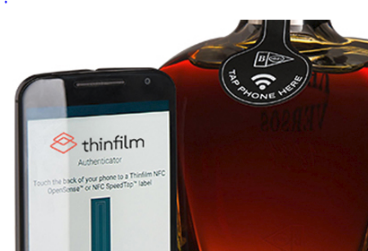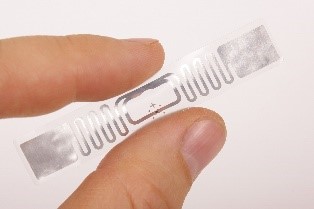 Creativity is not innovation and vice versa. Creativity, according to KeyDecisions.com, is recognized as fresh ideas and innovations are about implementation of creative advancements. The thought is, being creative has no basic risk (in most endeavors) and innovations have measurable risks; innovation is about better and smarter. Maybe the wine industry can look to creativity for innovative ideas.
Creativity is not innovation and vice versa. Creativity, according to KeyDecisions.com, is recognized as fresh ideas and innovations are about implementation of creative advancements. The thought is, being creative has no basic risk (in most endeavors) and innovations have measurable risks; innovation is about better and smarter. Maybe the wine industry can look to creativity for innovative ideas.
Near Field Communications (NFC) and QR Codes should offer the wine industry an innovative way to communicate with and not just at consumers. Take the opportunity to enhance loyalty, awareness, affinity with the winery organization and deliver salient facts about their wines. Using a small QR Code on labels and packaging, a message can be delivered to a consumerŌĆÖs smartphone instantly. These technologies have been around for decades but continue to evolve with innovative applications.
There is always a need to upgrade marketing approaches to deliver relevant product messages. Direct-to-consumer messaging using NFC or QR Codes allows customized messages in a timely, relevant and cost-effective format. Another benefit is that these tools allow for wineries to garner valuable demographic and marketing information at little additional costs

NFCŌĆÖs and QR CodeŌĆÖs allow the wine, beer and spirits industries is a way to be innovative in getting their story to the consumer. For example, maybe audio, messaging, and videos from a website would deliver a memorable message.
In a recent article by Sarah Grayhill, “Experts note that shoppers are seeking flavorful offerings across all alcohol beverage categories, which indicate growth. Premium-priced wine will leverage alternative packaging opportunities, with more varietals available in non-bottle form. And finally, brands can benefit from implementing digital purchasing options…” If consumers want to see and understand ŌĆ£flavorful offeringsŌĆØ then it stands to reason that that message, whether it be new or current, must be innovatively delivered.
What Grayhill is saying, the fields are rife with opportunities for new approaches in innovatively selling new and established products within the alcohol beverage industry
Rob McMillan-Executive Vice President, Silicon Valley Bank says, “The key to future success for U.S. wineries will be in cracking the millennial code to understand evolving consumer profiles. Today there are winners and losers in the wine trade. The winners are those with solid management teams who are willing to evolve their sales and marketing strategies, execute quickly on a plan, then evaluate success or failure to continuously improve.ŌĆØ The final sentence point to all the NFC and QR Code capabilities.
NFC and/or QR Code formats are a creative, innovative, targeted, and concise method for delivering a wineryŌĆÖs message to customers at a point where they desire information. An ancillary benefit to delivering information to the consumer are limitations for labeling that are resolved. With 257 million smartphone users in the U.S. it can be assumed NFC and QR Code capabilities are ubiquitous.
An NFC or QR Code is a way to expand timely product information delivered instantly to the consumer in an engaging manner-audio, video, text message and website. Even the message can be updated instantly by a winery. These can be highly targeted to specific markets and demographics. Lastly, the message can be more friendly than a label.
NFC or QR Codes is not just about getting information out to consumers. There is a tremendous amount of marketing information available to the wine marketer once an NFC or QR Code is deployed. The backend of this technology offers a wealth of information through data retrieval applications.
Face-to-face selling is probably the most effective because it is hard to beat a tasting room environment to sell wines. But NFC and QR Code technologies might be the next best. Here is a great opportunity to overcome objections and close the sale.
NFC and the QR Code allows the wine industry to get in front of the consumer when the consumer wants information. These two technologies can deliver most any brand message in most any format instantly, to the consumer and at the consumers request. What other vehicle can deliver a request for more information directly to the consumer at minimal costs?
Today the consumer can buy groceries from a smartphone and receive a product ingredient list, nutritional information, price comparisons and recipes in seconds, using NFC and QR Codes. Some in the beer industry have been using QR Code and NFC tags to speak to the consumer using such vehicles as drink coasters on-premise. Virtually all smartphones have the capability to access this technology today.
The cost to experiment with these technologies can be very affordable. Anyone can go on-line and create their own QR Code. Because NFC involves a ŌĆ£tagŌĆØ and programming of the tag, there are some limitations for experimentation.
Sneh Choudhary V.P.-Beaconstac Technologies has a lot of experience planning and launching NFC and QR Code. She says, ŌĆ£because NFC and QR Codes serve the same purpose, start with QR Codes given the level of awareness amongst customers.ŌĆØ NFC tags require third party involvement up-front. ŌĆ£No matter the starting point, both approaches can render the same results for comprehensive solutionsŌĆØ
A quick list of some FAQsŌĆÖ might get innovative thinking started:
Can content seen on a website be delivered immediately to a smartphone? Yes, an image of a product, description and information about the winery/winemaker/pairing suggestions can all be available instantly. These are some of the benefits of using a QR Code and NFC tags on products.
How can a winery track metrics such as views, conversions or even geographic locations?
A fully integrated program can be deployed seamlessly with Google Analytics. Using GPS data, a winery could understand where an NFC/QR Code was scanned. With a comprehensive integration effort, various winery campaigns can indicate what campaigns and products are selling.
Would it be possible to incentivize a visitor via QR Code or NFC tag to subscribe to a winery newsletter?
Yes. For example, today when you check road conditions on your smartphone, you are using an API and that is the exact method used to facilitate customers interaction with a winery.

What will this initial effort cost?
This subject is like someone coming into a winery and asking what a bottle of wine cost. In the case of deploying a QR Code or NFC approach here are some guidelines:
- For an NFC launch you can expect to spend $49 per month plus cost of NFC tags to be placed somewhere on the bottle. Additionally, there are up-front integration cost. Tags can cost $0.25 each or more.
- If utilizing QR Codes, a program can be launched for $15 per month. There may be some integration fees, depending on backend requirements. Integration costs are a function of just how detailed information a winery needs.
- With help, a program using either format can be set in motion in 30 minutes or less.
- Choosing a platform will automatically address server maintenance and set-up needs. Most back-end costs can be controlled for a start-up.
Capabilities to consider using either NFC or QR Codes.
- NFC tags or QR Codes for marketing can deliver a URL which can contain any type of content- video, audio, contact card, or most anything on a website. Either format can save a message on a smartphone, call a number, send a predefined message or text, recipes or wine pairing information.
What is the durability of NFC and QR Code formats?
- Both are highly reliable relative to reading. Even with printed QR Codes, reliable reading of the code is good even at a resolution of 50%. QR Codes have been printed on pressed paper fiber coasters with 100% reliable readings of the printed code.
- Some think QR Codes do not compliment the label. But, new QR Code developments can make the QR Code image color compatible, less intrusive and will draw the consumers attention to the technology.
If a campaign is launched using QR Codes can that format accommodate timely changes as well as NFC?
- QR Codes can be dynamic which permit quick changes in what the consumer sees. This allows for on demand changes to accommodate new campaigns. Today Dynamic programming and design of the API can allow for product changes in such things as text/image, pricing, inventory availability, etc.
Both approaches are economical and can deliver a plethora of formatted messages to the consumer. Even the large QR Code box seen in the past is now giving way to creative designs and can be very small.
Explore the options and innovate using the creativity already in the marketplace!
Cheers!
 Expert Editorial
Expert Editorial
by Steven Lay, owner, Image of Wine
Steven Lay has spent 30 years in the travel exhibition industry holding C level positions in Marketing and Product Development. Most recently Mr. Lay was the Chief Marketing Officer for a major on-line travel company. Currently, he owns a company that produces wine related gift/award products for large corporate events and a produces a tour program to New World wine areas.




